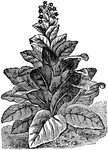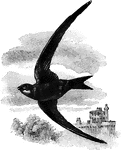
Tortoise
A class of reptiles belonging to the same order as the turtles, but differing from them mainly in that…

Whale
The common name of animals belonging to the order cetacea, with which are included the porpoise and…

Common Skunk
Medium-sized mammals with black-and-white-fur belonging to the family Mephitidae and the order Carnivora.
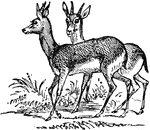
Gazelles
A gazelle is an antelope of the genus Gazella. They are known as fast animals; they are able to reach…
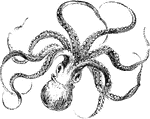
Cuttle-fish
Cuttlefish are animals of the order Sepiida, and are marine cephalopods, small relatives of squid and…

Archaean Time
This is a diagram showing the rocks of the successive periods of time. They are shown in order from…

Nicola Rienzi
A roman patriot; born about 1310. He was of obscure birth; but having received an excellent education,…

Cicada
The popular and generic name of certain insects belonging to the order Hemiptera, suborder Homopotera,…

Facial Arteries
The arteries of the face and scalp. The muscle tissue of the lips must be supposed to have been cut…
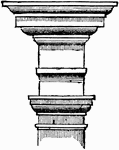
Tuscan Order
A stocky simplified variant of the Doric order that was introducted into the canon of classical architecture…
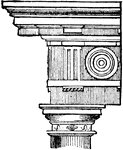
Doric Order
One of the three orders or organizational systems of Ancient Greek or classical architecture.

Ionic Order
One of the three orders of classical architecture. It originated in the mid-6th century BC.

Corinthian Order
One of the three orders of classical architecture. It was said to have been invented by an architect,…

Composite Order
A mised order, combining the volutes of the Ionic order with the leaves of the Corinthian order.

Male Pilgrim
A traveler, specifically one who journeys to some place esteemed sacred, either as a penance or in order…
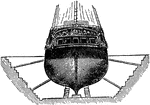
Dry Dock
Dry docks are two kinds, the stationary dock and the floating dock. They are used in order to get at…

Lemon
The fruit of a small tree belonging to the same natural order as the orange. There are numerous varieties…
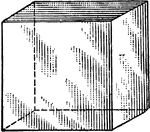
Cube
"Science has succeeded in classifying the thousands of known crystals in six systems, to each of which…
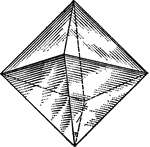
Regular Octahedron
"Science has succeeded in classifying the thousands of known crystals in six systems, to each of which…

Rhombic Dodecahedron
"Science has succeeded in classifying the thousands of known crystals in six systems, to each of which…
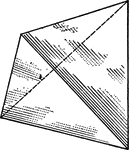
Regular Tetrahedron
"Science has succeeded in classifying the thousands of known crystals in six systems, to each of which…

First Right Square Prism
"Science has succeeded in classifying the thousands of known crystals in six systems, to each of which…

Second Right Square Prism
"Science has succeeded in classifying the thousands of known crystals in six systems, to each of which…

First Right Square Octahedron
"Science has succeeded in classifying the thousands of known crystals in six systems, to each of which…
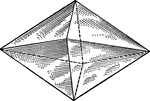
Second Right Square Octahedron
"Science has succeeded in classifying the thousands of known crystals in six systems, to each of which…
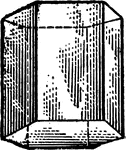
Hexagonal Prism
"Science has succeeded in classifying the thousands of known crystals in six systems, to each of which…

Six-sided Pyramid
"Science has succeeded in classifying the thousands of known crystals in six systems, to each of which…
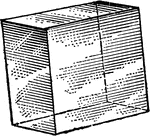
Rhombohedron
"Science has succeeded in classifying the thousands of known crystals in six systems, to each of which…

Magnified Louse
"A genus of insects, the type of a very numerous family, which forms the order Parasita or Auoplura.…
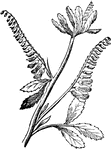
Melilot
"A genus of clover-like plants of the natural order Leguminosae, with ternate leaves, differing from…

Mistletoe
"A genus of small parasitical shrubs of the natural order Loranthaceae. This order is exogenous, and…

Papaw Tree
"A South American tree of the natural order Papayaceae of which order about 30 species are known which…

Passionflower
"A genus of plants almost exclusively native to the warm parts of America, and belonging to the natural…
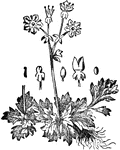
Saxifrage
"A genus of plants of the natural order Saxifrangeae. This order has a calyx, usually of five sepals…

Buoy Mooring Block
"Mooring anchors are those which are places in harbours, for the convenience of vessels frequenting…

Cast-iron Mooring Anchor
"Mooring anchors are those which are places in harbours, for the convenience of vessels frequenting…
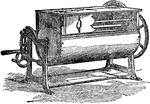
Kneading Machine
"A form of dough-making machine in common use. It consists of a trough or box, the lower portion of…
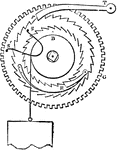
Harrison's Going-Ratchet
"The click barrel-ratchet R is set upon another larger ratchet-wheel, with its teeth pointing the opposite…

Dannebrog
"The cross of the Danisn order of the Dannebrog, a white cross surmounting a red one, with the royal…

Slider of Kelvin Ampere Balance
"The upper edge of the shelf on which the weights slide is graduated into equal divisions, and the weight…

Heath
"Erica cinerea. The English form of a name given in most Teutonic dialects to the common ling or heather,…

Heath
"Calluna Vulgaris. The English form of a name given in most Teutonic dialects to the common ling or…

Furnace Doors
"Sylvester's furnace doors or doors of similar form are preferable to the ordinary hinged doors, because…

Centrifugal Pump
"A centrifugal pump differing from an ordinary centrifugal pumps in one feature only. The water rises…

Rhizostomae
"In the sub-order Rhizostomae the edges of the oral opening use together at an early age and leave several…
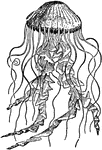
Chrysaora
"In the sub-order Rhizostomae the edges of the oral opening use together at an early age and leave several…

Agrimony
"A genus of plants of the natural order rosacae, sub-order Potentilleae. The calyx is five-cleft, without…

Alcantara
"One of the religious orders of Spanish knighthood, was founded as a military fraternity for the defense…
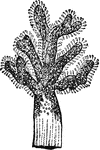
Alcyonium
"A genus of Zoophytes, the type of family called Alcyonide, belonging to the class anthozoa, and order…

Alcyonium
"A genus of Zoophytes, the type of family called Alcyonide, belonging to the class anthozoa, and order…

Alcyonium Digitatum
"A genus of Zoophytes, the type of family called Alcyonide, belonging to the class anthozoa, and order…
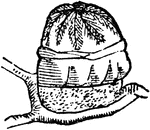
Alcyonium Digitatum
"A genus of Zoophytes, the type of family called Alcyonide, belonging to the class anthozoa, and order…
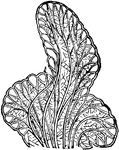
Alcyonium Digitatum
"A genus of Zoophytes, the type of family called Alcyonide, belonging to the class anthozoa, and order…
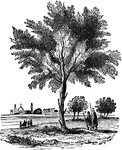
Almond Tree
"A genus of the natural orer Rosaceae, sub-order Amygdaleae or Drupaceae, consisting of trees or shrubs,…

Amaranth
"A genus of plants of the natural order Amaranthaceae. This order contains nearly 300 known species,…
